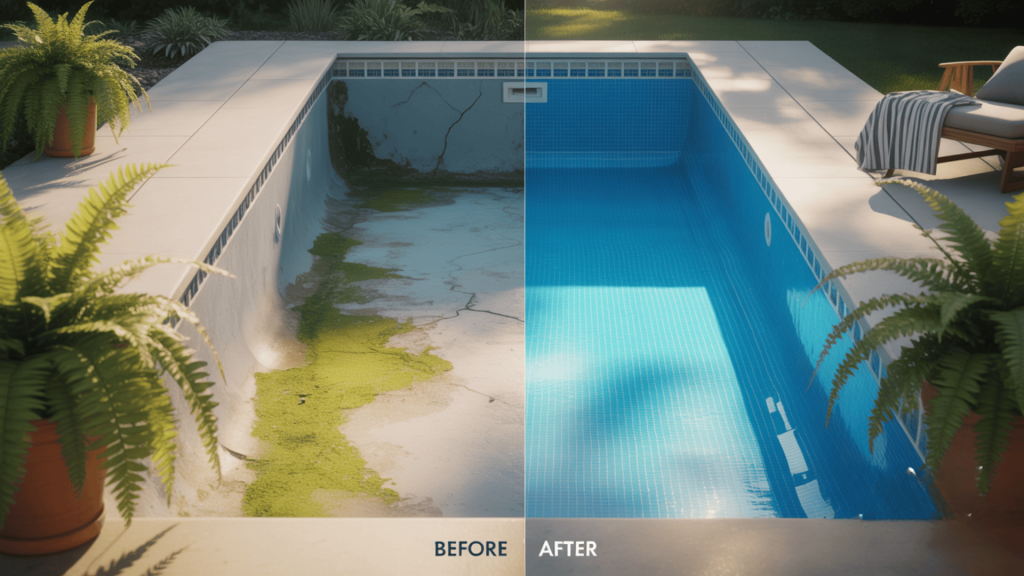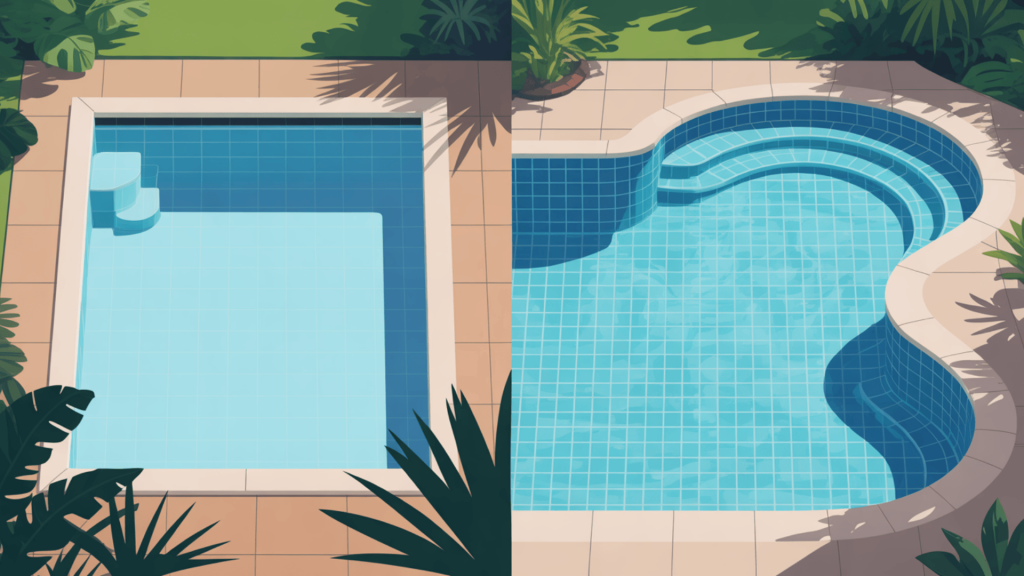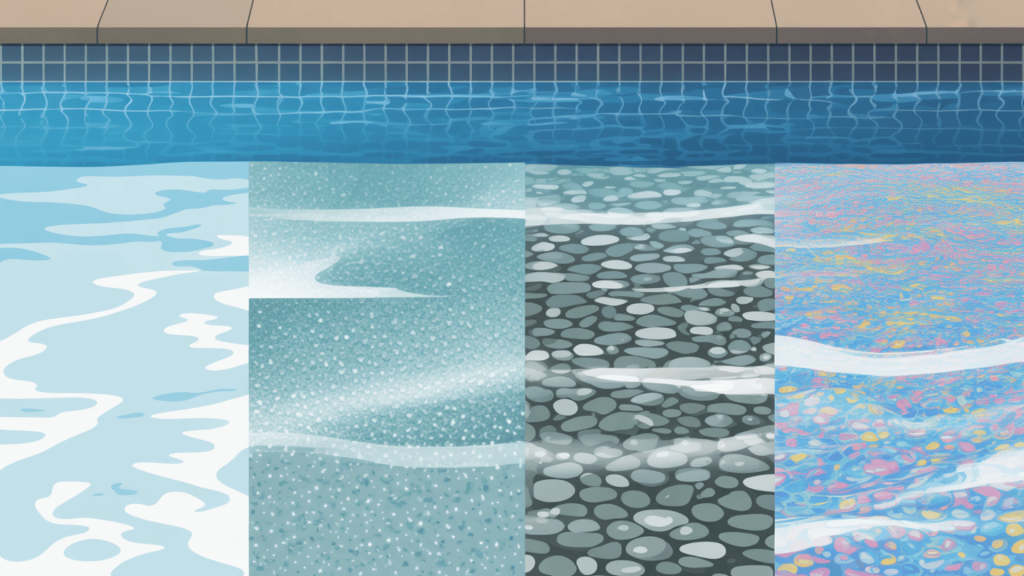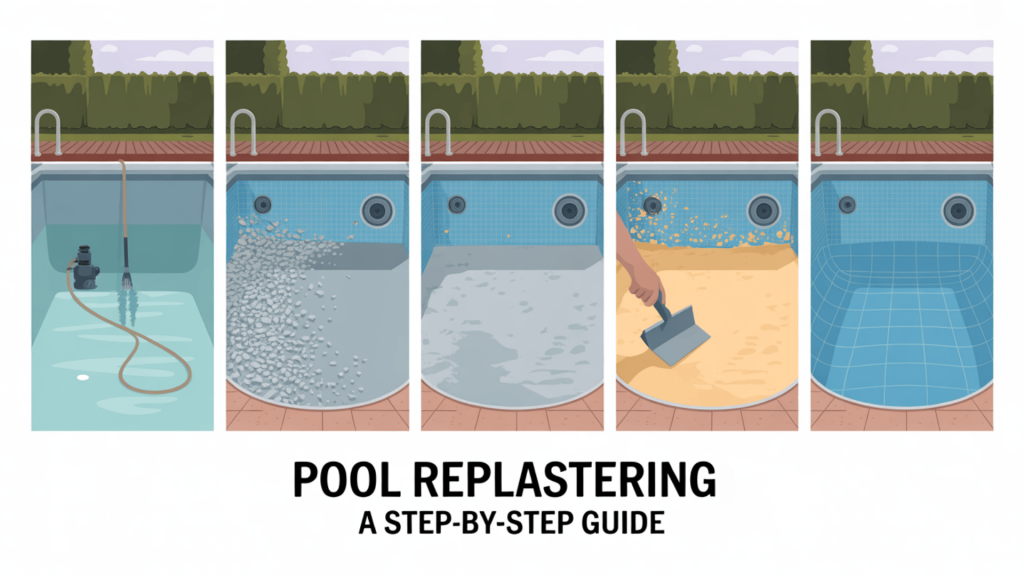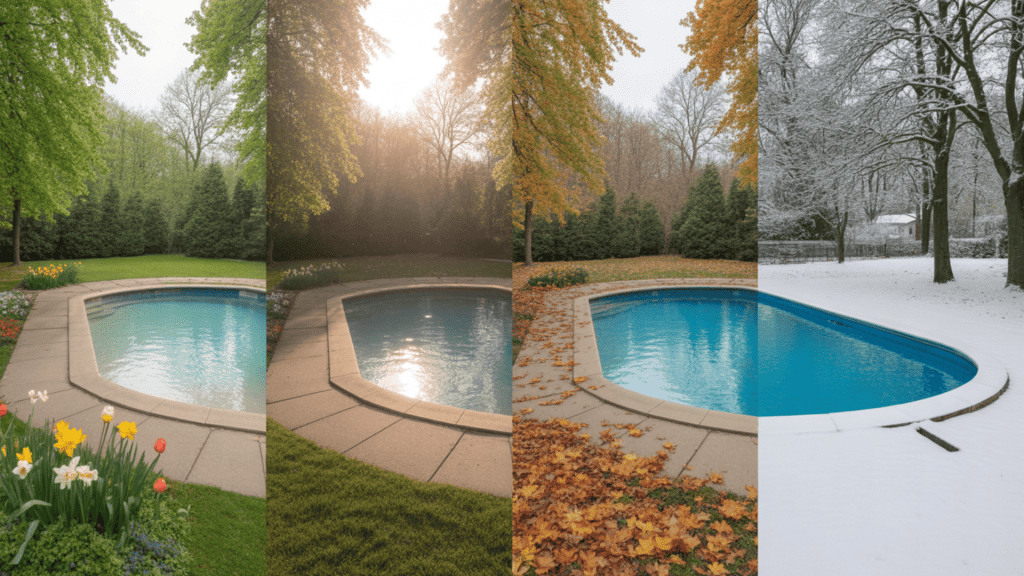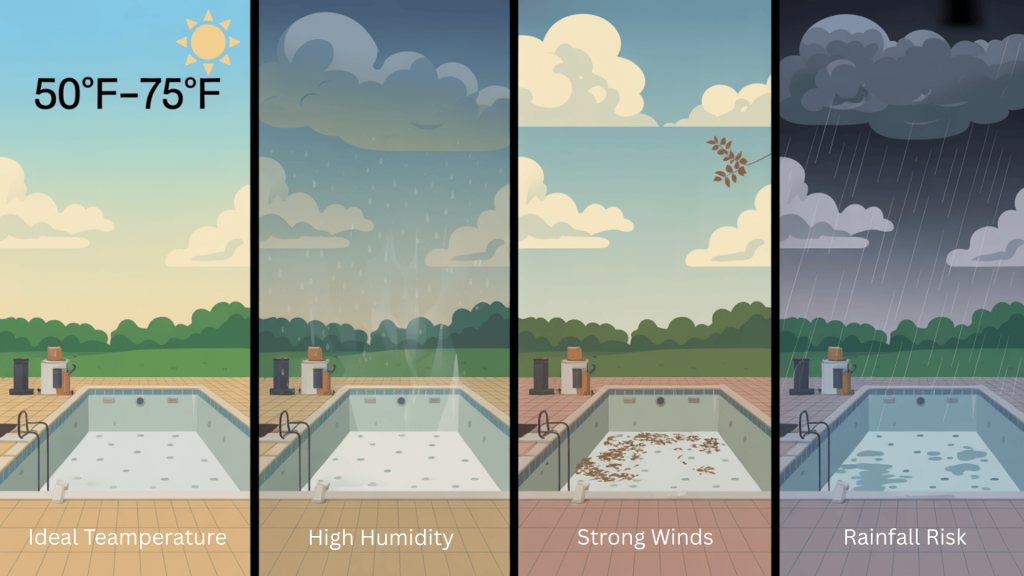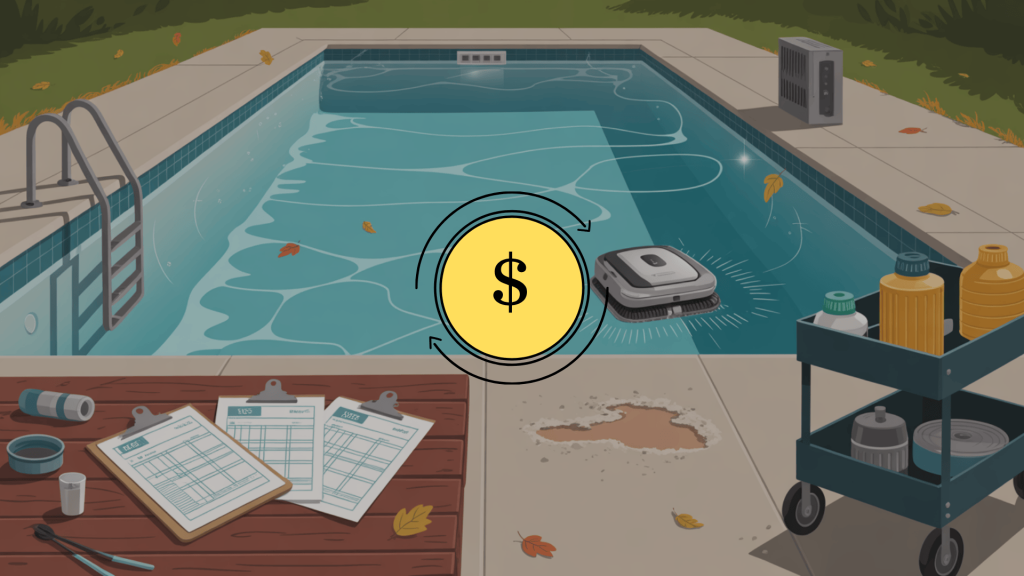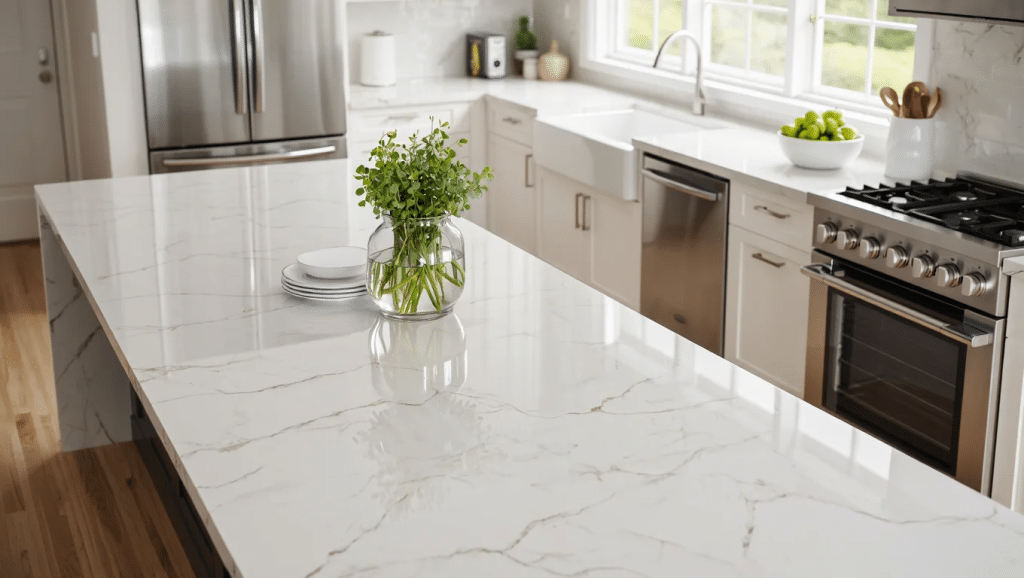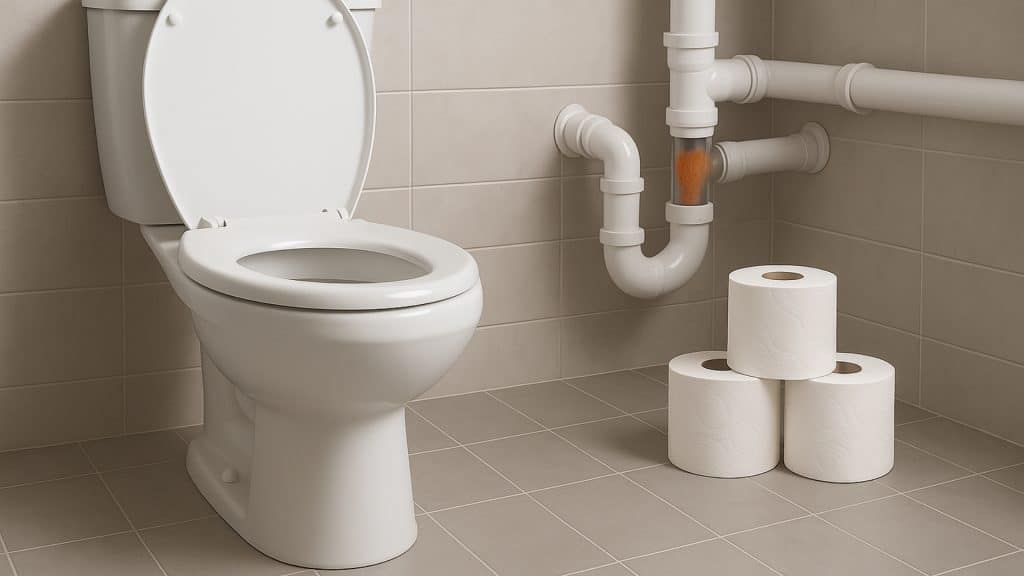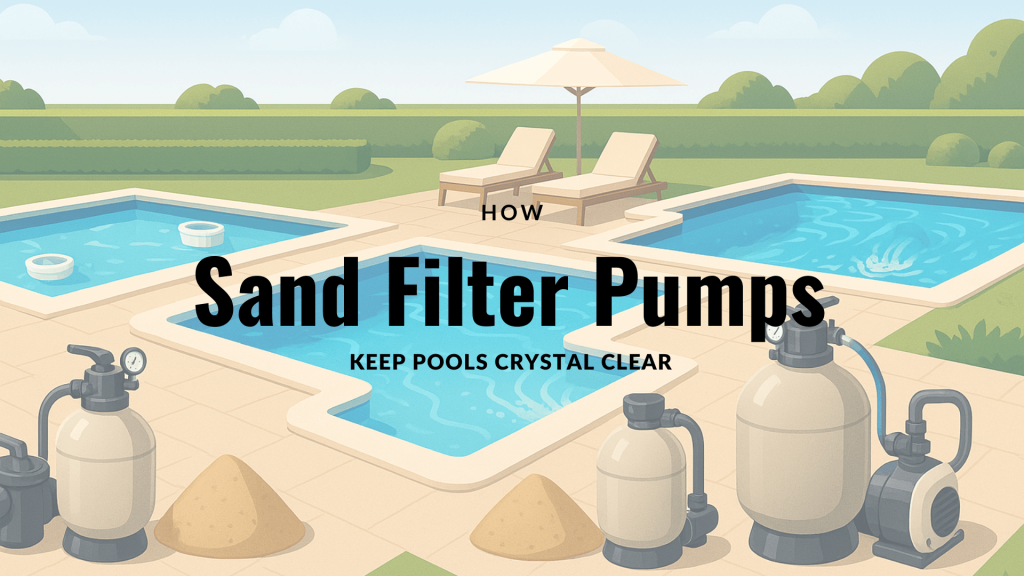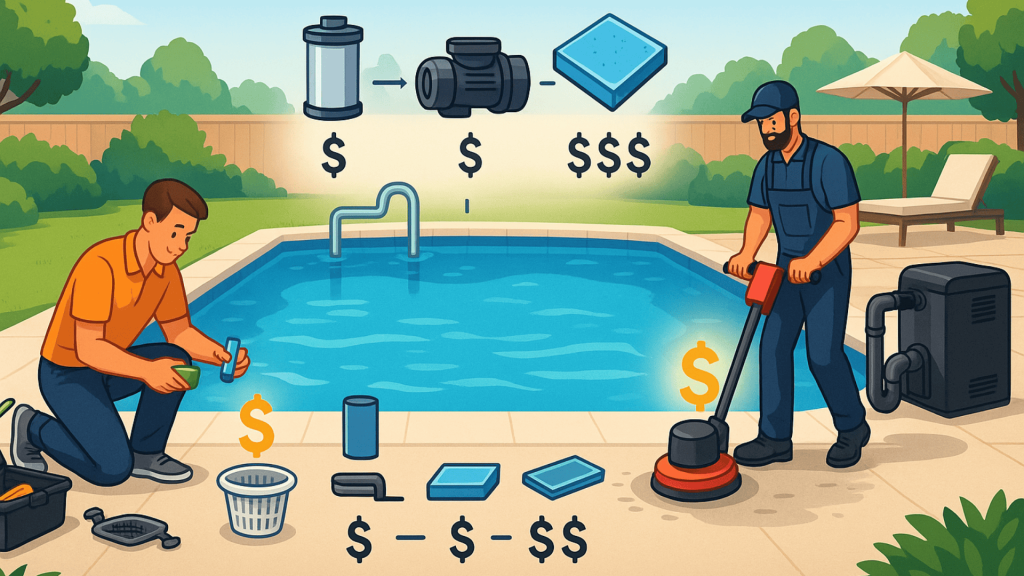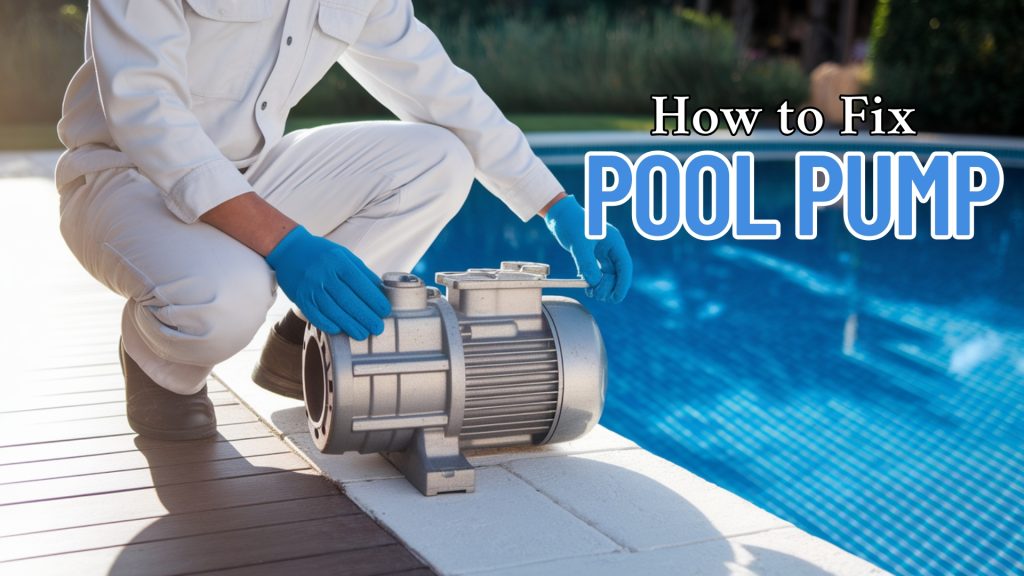Thinking about giving your pool a facelift?
Pool replastering isn’t just a cosmetic upgrade—it’s essential maintenance that affects your swimming experience and property value.
But when homeowners start researching costs, they often find confusing or incomplete information.
The truth?
Prices range widely from $2,300 to $30,000, depending on several key factors.
We’ve broken down the real costs, material options, and smart timing strategies to help you make informed decisions.
Learn what impacts your bottom line and how to spot contractors who might be overcharging.
Ready to turn your worn-out pool into a backyard showpiece while keeping your budget intact?
Let’s jump in.
What is Pool Replastering and Why Does it Matter?
Your swimming pool serves as the heart of summer fun and relaxation.
Over time, though, the inner surface of your pool can wear down.
This is where pool replastering comes into play.
Pool replastering involves putting a fresh coat of plaster on your pool’s interior surface.
It’s different from resurfacing, which is a more complete job that might include fixing the underlying structure.
Think of replastering as giving your pool a new skin, while resurfacing is more like a total makeover.
Watch out for these signs that your pool needs replastering:
- Rough spots that can scrape the skin
- Stains that won’t come out with cleaning
- Small cracks in the surface
- Water that needs more chemicals than usual
- The plaster is flaking off in spots
Keeping an eye on these warning signs can help you fix problems before they get worse and more costly.
A well-kept pool not only looks better but also provides a safer place for everyone to enjoy.
How Much Does Pool Replastering Cost?
When planning to fix your pool, cost is often the first thing on your mind.
Pool replastering is a big job, and prices can vary based on many factors.
For most homeowners with a standard 1,000 square foot pool, replastering costs between $6,000 and $15,000.
This breaks down to about $4.50 to $8.00 per square foot.
Some smaller jobs might cost as little as $2,300, while high-end finishes can push prices above $30,000.
Here’s a quick look at how costs compare:
| FINISH TYPE | PRICE PER SQ FT | PROS | CONS |
|---|---|---|---|
| White Plaster | $4-$6 | Most affordable option | Shortest lifespan (5-7 years) |
| Quartz | $7-$10 | More stain-resistant than basic plaster | Medium cost option |
| Pebble | $10-$15 | Very long-lasting (15-20 years) | Higher upfront cost |
| Tile | $20-$30 | Looks stunning, extremely durable | Most expensive option |
| Polymer | $12-$16 | No acid washing needed | Newer option with less track record |
These prices are starting points – your actual cost will depend on your pool’s specific needs and where you live.
Key Factors That Affect Pool Replastering Costs
Several key elements determine how much you’ll pay to replaster your pool.
Understanding these factors helps you budget better and avoid surprises.
Size and Shape Considerations
The bigger your pool, the more materials and work time needed for the job.
Complex shapes also add to the cost.
- Standard rectangular pools are cheapest to replaster
- Curved or freeform pools require more skilled labor
- Steps, benches, and swim-outs add to the total area
- Deep pools need more materials than shallow ones
These physical features of your pool are fixed, but knowing how they impact cost helps set realistic expectations.
Material and Finish Options
Your choice of finish affects both price and how long the work will last.
- Basic white plaster is most affordable, but lasts 5-7 years
- Quartz blends cost more but resist stains better
- Pebble finishes are premium options lasting 15-20 years
- Glass bead mixes offer unique looks at higher prices
The right material depends on your budget, how long you plan to own the home, and what look you want.
Pool Replastering Process Explained Step-by-Step
Replastering a pool is a multi-day project that requires special skills and tools.
Understanding the process helps you know what to expect when your contractor starts work.
The entire job typically takes 5-7 days from start to finish, though swimming may not be possible for 1-2 weeks.
Step 1: Empty the Pool
The first step is removing all water from your pool.
Contractors must install ground pressure relief valves when emptying a pool to prevent it from floating due to groundwater pressure.
The water is pumped out safely, following local rules about drainage.
Step 2: Prepare the Surface
Once empty, the old surface must be readied for new materials.
The contractor removes loose or damaged plaster by chipping it away.
They clean the surface with an acid wash to remove stains and create a rough texture for better plaster adhesion.
Step 3: Apply Bond Coat
A thin layer called a bond coat goes on first.
This special material helps the new plaster stick to the old surface.
It’s brushed or sprayed on evenly across the entire pool interior.
Step 4: Apply New Plaster
Now comes the main event – applying fresh plaster.
Workers mix the plaster on site and apply it quickly before it starts to set.
They use special trowels to spread it evenly, working in sections.
The finish is applied in one or two coats, depending on the material chosen.
Step 5: Fill and Treat Water
The curing process starts as soon as water touches the new plaster.
The pool is filled promptly after plastering to prevent cracking.
For the first weeks, the water chemistry needs special care to protect the new finish as it hardens fully underwater.
Best Time of Year to Replaster a Pool
Timing your pool project wisely can lead to better results and sometimes even save money.
Weather plays a bigger role than many people realize.
Ideal Seasons for Replastering
Moderate temperatures make for the best plastering conditions.
Mid-spring and early fall offer the sweet spot of mild weather with lower chances of rain or extreme heat.
These conditions allow the plaster to cure properly without drying too quickly or too slowly.
During summer months, intense heat can cause the plaster to dry too fast and crack.
Winter brings its own problems, as cold temperatures can prevent proper curing altogether.
Many contractors offer better rates during their slower seasons, which typically fall in early spring or late fall.
Weather Factors to Consider
Beyond the season, specific weather conditions matter greatly.
The ideal temperature range for plastering is 50°F to 75°F.
High humidity can slow drying time, while strong winds can cause the plaster to dry unevenly.
Rain is the biggest enemy of fresh plaster.
Most contractors watch weather forecasts carefully and may reschedule if rain threatens.
A sudden shower can ruin a fresh plaster job, requiring costly fixes.
Cost-Saving Tips for Smart Pool Owners
While pool replastering is a major expense, smart planning can help you save money without cutting corners on quality.
- Schedule your project during off-peak months when contractors are less busy
- Handle small repairs promptly before they become big problems
- Clean and maintain your pool properly to extend plaster life
- Get at least three quotes from different licensed contractors
- Ask about bundling replastering with other needed pool work
Regular care makes a huge difference in how long your pool plaster lasts.
Running your filter properly, keeping the water chemistry balanced, and brushing the walls weekly can add years to your plaster’s life.
Some owners get 12+ years from standard plaster with proper care, compared to just 5-7 years with neglect.
Look for contractors with solid references, proper insurance, and warranties that protect your investment for years to come.
Final Thoughts
Picture this: You step into your backyard on a hot summer day.
The sun sparkles off your newly replastered pool—smooth, clean, and inviting.
That feeling?
Priceless.
By choosing the right materials, timing your project smartly, and working with quality professionals, you’ve protected your investment.
You’ve also created a gathering spot for countless memories to come.
The knowledge you’ve gained puts you miles ahead of most homeowners and helps you avoid the pitfalls of overpaying or cutting corners.
As you plan your pool project, remember that each decision shapes years of future enjoyment.
Take your time, ask the right questions, and soon you’ll be the neighbor everyone asks for advice about their own pools.
The perfect swim awaits you!

